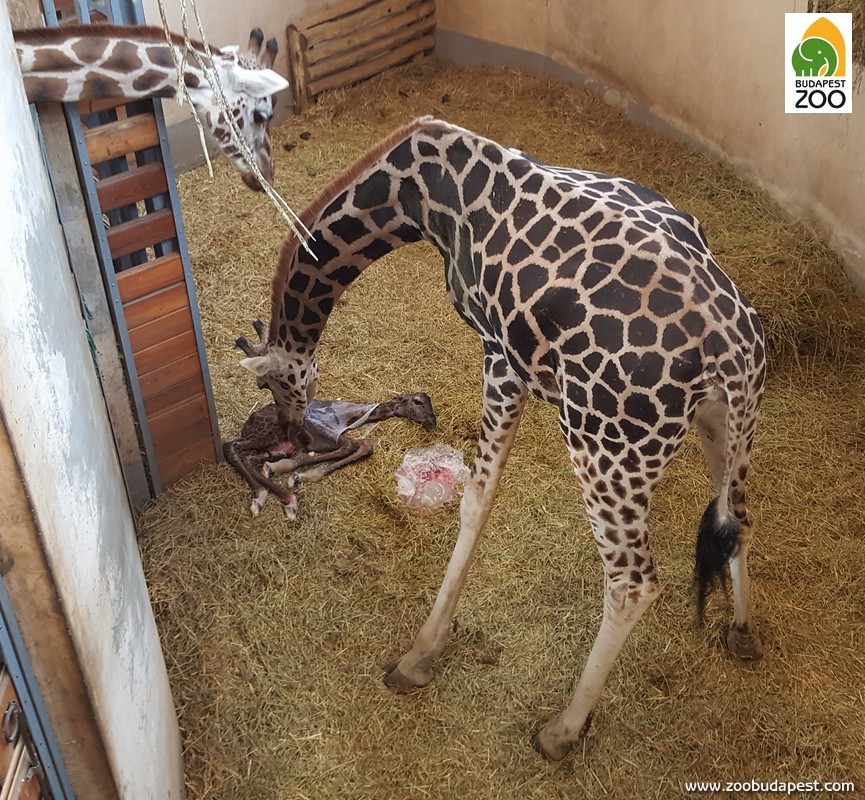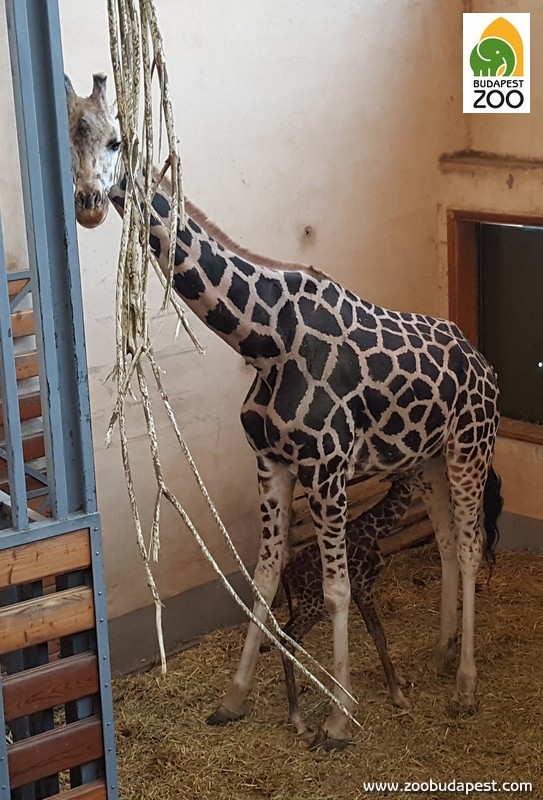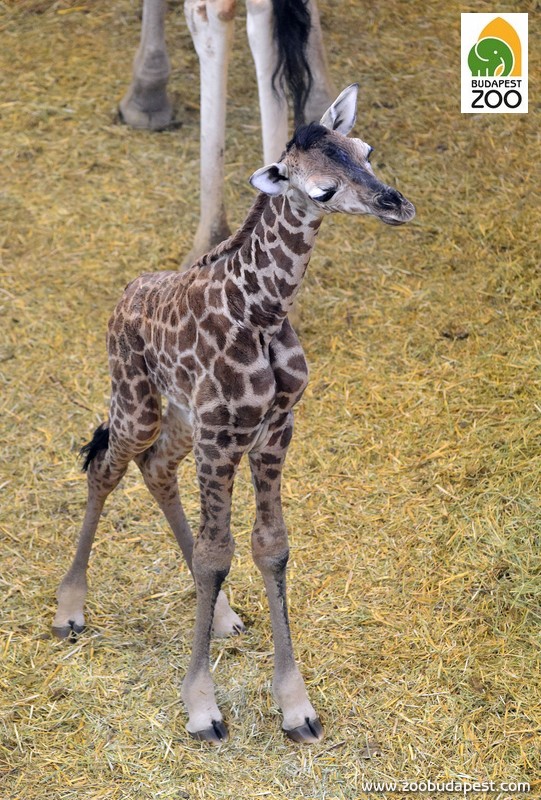A giraffe calf is the first new-born in the new year January 3, 2017
 We did not have to wait long for the first new-born of the year. Our female giraffe, Santana, has already given birth to a healthy calf on New Year’s Day. The new-born saw the daylight in the early afternoon. The baby tried to stand on its feet not long after the birth, as is usual for ungulates, and it succeeded after one hour, following some stumbling. A few minutes later it already started to suckle and has been developing normally ever since.
We did not have to wait long for the first new-born of the year. Our female giraffe, Santana, has already given birth to a healthy calf on New Year’s Day. The new-born saw the daylight in the early afternoon. The baby tried to stand on its feet not long after the birth, as is usual for ungulates, and it succeeded after one hour, following some stumbling. A few minutes later it already started to suckle and has been developing normally ever since.
A short video was also shot on the birth of the baby, showing not only the birth itself but also the first few steps of the calf.
ATTENTION: Some images showing the birth of the calf might be upsetting for certain viewers.
 Santana, the mother giraffe, is the oldest member of the giraffe herd in our Zoo. She was born on 22 July 1996 in the Liberec Zoo in the Czech Republic, so she will be 21 this year. This is not a short lifespan, considering that giraffes living in the wild rarely live longer than 20 to 25 years, although a much longer lifespan can be reached by some zoo specimens. Santana became a resident of the Budapest Zoo and Botanical Garden on 12 June 1997. She is a rather experienced mother: although the keepers had to assist in bringing up her first calf, Samburu, born in 2001, she nevertheless successfully raised a further four calves on her own and we can be hopeful that this current calf will cause no trouble either.
Santana, the mother giraffe, is the oldest member of the giraffe herd in our Zoo. She was born on 22 July 1996 in the Liberec Zoo in the Czech Republic, so she will be 21 this year. This is not a short lifespan, considering that giraffes living in the wild rarely live longer than 20 to 25 years, although a much longer lifespan can be reached by some zoo specimens. Santana became a resident of the Budapest Zoo and Botanical Garden on 12 June 1997. She is a rather experienced mother: although the keepers had to assist in bringing up her first calf, Samburu, born in 2001, she nevertheless successfully raised a further four calves on her own and we can be hopeful that this current calf will cause no trouble either.
We have been keeping giraffes at our Zoo since 1868. The first giraffe, called “foltos nyakorján” (spotty neck) in Hungarian back then, was a gift from Franz Joseph, having been persuaded by Queen Elizabeth. In the past one and a half century, altogether 32 healthy giraffe calves have been born at the zoo, including this current one. Currently we have three adult females (Santana, Ingrid, Sandra), a male (Akin), two youngsters born in 2015 (Ikinya, Sisi), and the newly born calf, i.e. seven specimen represent the giraffe species in Budapest.

The gestation period of giraffes is usually between 400 and 460 days. New-borns are 170 to 180 cm tall. Calves suckle until they are 12 to 16 months old; however, they are already trying to eat solid food when they are a couple of months old, and they gradually increase the proportion of it. Females reach sexual maturity after five years, and males after seven years.